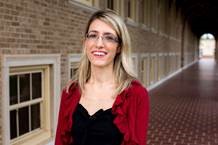Abstract: The deaths of massive stars seed our universe with black holes and neutron stars - the most exotic objects of the stellar graveyard. The births of these stellar remnants, as well as their mergers when paired in binaries, power explosions that can launch the most relativistic jets we know of in the universe (gamma-ray bursts) and shake the very fabric of space-time via ripples called gravitational waves. GW170817, the merger of two neutron stars witnessed through both its gravitational wave siren and its glow at all wavelengths of light, represents the first multi-messenger detection of one such extreme cosmic collision.
Starting from the example of GW170817, I will discuss how radio light in particular, and gravitational waves, can be used in tandem to unveil the physics of relativistic transients. I will also highlight opportunities and challenges that lie in front of us, as improvements in detectors’ sensitivities will transform a trickle of multi-messenger discoveries into a flood.
Biography: Alessandra Corsi is Associate Professor with a President’s Excellence in Research Professorship in the Department of Physics and Astronomy at Texas Tech University. Her research focuses on multi-messenger time-domain astronomy. She received her Laurea in Physics in 2003 and her Ph.D. in Astronomy in 2007 from the University of Rome Sapienza. She carried out post-doctoral research at various institutions including the California Institute of Technology. She joined Texas Tech as faculty in 2014. In 2015, she received an NSF CAREER award titled “CAREER: Radio and gravitational-wave emission from the largest explosions since the Big Bang”. She is a National (Italy) L’Oreal-Unesco awardee for Women in Science, a Fellow of the Research Corporation for Science Advancement, and a Fellow of the American Physical Society. In 2020 she was awarded the O’Donnell Award in Science of The Academy of Medicine, Engineering and Science of Texas (TAMEST), and was selected as one of “The SN 10: Scientists to Watch” by Science News. She is also one of the recipients of the 2022 New Horizons in Physics Prize “For leadership in laying foundations for electromagnetic observations of sources of gravitational waves, and leadership in extracting rich information from the first observed collision of two neutron stars.”
Event Details
Date/Time:
-
Date:Thursday, January 6, 2022 - 11:00am to 12:00pm
Location:
Howey Physics Building N201/202
For More Information Contact
John Wise



